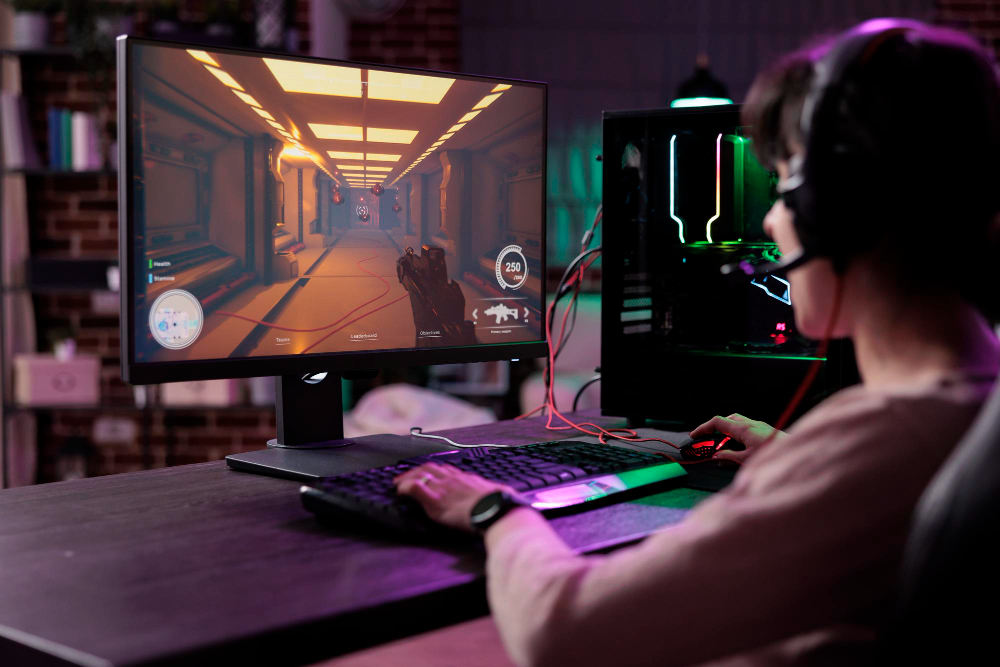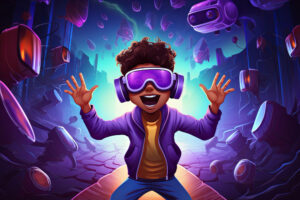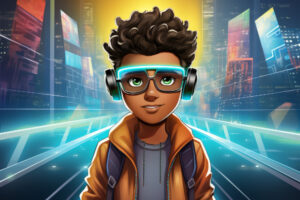Generative AI has recently made a significant impact on the gaming industry, particularly in the game development process. Game developers can effortlessly create stunning, realistic game environments and characters at a fraction of the time and cost with the help of AI. The rise of AI-generated game assets has increased expectations in the gaming industry, making the game development process faster and efficient. Recent statistics reveal that the use of AI-generated assets has surged by 40% in the gaming industry in the past year alone, marking a new era in game development.
In this blog post, we explore AI-generated game assets in the context of game development. At the same time, the blog gives insights into how to use AI game assets for game development projects.
What are AI-Generated Game Assets?
AI-generated game assets refer to digital content, including characters, environments, textures, and animations, that are created or enhanced using artificial intelligence algorithms. Unlike traditional methods that require hours of manual labor, AI algorithms analyze vast datasets to generate high-quality, realistic game elements. This includes everything from lifelike character animations to intricately detailed landscapes that we see in the game.
The technology behind AI-generated game assets is diverse, incorporating machine learning, neural networks, and deep learning algorithms. In the context of game asset generation, machine learning algorithms are trained on massive amounts of existing game assets, such as sprites, textures, and 3D models. This training data allows the algorithms to learn the patterns and characteristics of different types of game assets. Moreover, In game asset generation, neural networks are used to learn the complex relationships between different elements of game assets. Again, Deep learning algorithms are particularly well-suited for generating complex and nuanced game assets, such as high-resolution textures and 3D models.
By combining machine learning, neural networks, and deep learning, AI-generated game assets can be created with remarkable efficiency and creativity. These algorithms can produce new, unique content that is consistent with the style and quality of existing game assets.
What Makes AI-Generated Game Assets Important?
The significance of AI-generated game assets cannot be overstated. The recent popularity and rise in the use of Ai game asset generators indicate its significance. Firstly, they drastically reduce the time and resources required for game development. What once took months can now be achieved in a matter of weeks, allowing developers to focus more on creativity and innovation.
Moreover, AI-generated assets enhance the overall quality of games. The level of detail and realism achieved through AI algorithms surpasses what is achievable through manual creation alone. This not only elevates the gaming experience for players but also allows developers to experiment more in the world of gaming.
Additionally, AI-generated assets open up new possibilities for indie game developers and smaller studios by leveling the playing field. The cost-effective nature of AI-generated content enables smaller teams to compete with industry giants, fostering a more diverse and innovative gaming landscape.
In addition to these benefits, AI-generated game assets can also be used to create personalized experiences for players. AI algorithms can analyze player data to create custom game assets that are tailored to the player’s preferences. This can lead to more engaging and immersive gaming experiences.
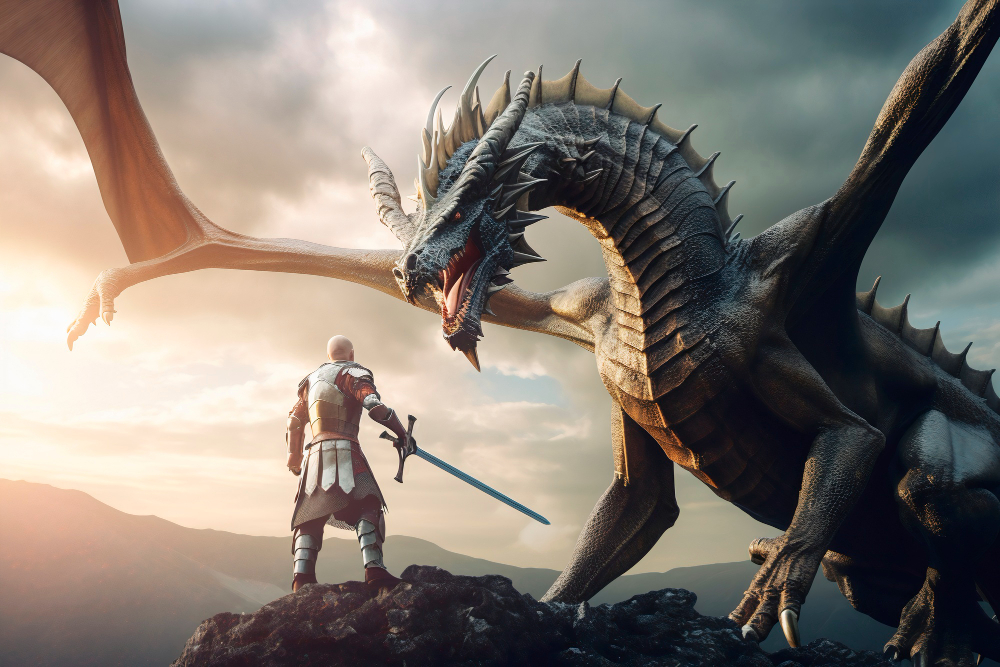
How to Use AI-Generated Game Assets?
Here’s how you can generate game assets with AI:
1. Choose the Right AI Game Asset Generator:
Begin by selecting a reliable AI game asset generator. Look for platforms like 3Daily that offer a range of customization options and are compatible with your game development tools. Ensure that the chosen generator provides regular updates and support, as staying updated with advancements in AI technology is crucial for optimizing your game development workflow. Additionally, consider the user community surrounding the platform, as a robust community often translates to valuable insights, tutorials, and a collaborative space for troubleshooting any issues that may arise during the asset generation process.
2. Define Your Requirements:
Clearly outline your project requirements by specifying the types of assets you need—whether they be characters, environments, textures, or a combination of these elements. Additionally, articulate any specific styles or themes you want to incorporate into your game. Providing a detailed overview of your project requirements ensures that the AI game asset generator can tailor its output to align seamlessly with your creative vision, resulting in assets that assimilate properly in your game.
3. Integrate AI Tools into Your Workflow:
Seamlessly incorporate the selected AI tools into your existing game development workflow. Most AI generators offer plugins or APIs that simplify the integration process, allowing for a smooth and efficient collaboration between the AI technology and your development environment. This integration not only streamlines the asset generation process but also ensures that the AI-generated content seamlessly fits into your overall project.
4. Refine and Customize:
While AI can produce impressive content, having the ability to refine and customize assets is essential to align them with your creative vision. Ensure that the chosen AI tool provides user-friendly features for easy adjustments and modifications. This flexibility allows you to fine-tune generated assets, ensuring they meet the specific aesthetic and functional requirements of your game. The capability to customize AI-generated content empowers developers to maintain creative control and produce a unique gaming experience that resonates with their target audience.
5. Quality Assurance:
Regularly test and assess the generated assets within the context of your game. This helps identify any inconsistencies or areas that may require manual intervention for fine-tuning. Conduct thorough testing to ensure that the AI-generated assets align seamlessly with the overall aesthetic, performance, and functionality of your game. By implementing a robust quality assurance process, you can address any potential issues early on, guaranteeing a polished gaming experience for your players.
Extra Tips for Maximizing AI-Generated Game Assets
As you embark on the journey of integrating AI-generated game assets into your development process, consider these additional tips to ensure a seamless and optimized experience.
1. Experiment with Style Transfer:
AI-generated assets often come with the flexibility to experiment with different artistic styles. Utilize style transfer techniques to give your game a unique and visually striking identity. Whether you’re aiming for a classic, hand-drawn look or a futuristic aesthetic, AI can adapt to your creative vision. Experimenting with different styles adds an extra layer of creativity and customization to your AI-generated assets, contributing to the overall immersive experience of your game.
2. Combine AI-Generated Assets with Traditional Elements:
Achieve a perfect balance by combining AI-generated assets with manually created elements. This hybrid approach allows you to retain a personal touch while benefiting from the efficiency of AI. For example, you can use AI for expansive landscapes and focus on hand-crafted characters to add a bespoke touch. This blend of AI and traditional creation methods results in a rich and diverse visual experience, showcasing the best of both worlds in your game development process.
3. Optimize for Performance:
While AI-generated assets can enhance visual quality, it’s crucial to consider performance optimization. Ensure that the file sizes and complexity of assets are optimized to maintain a smooth gaming experience. Experiment with different compression techniques to strike the right balance between quality and performance. Performance considerations are essential to the overall success of your game because they not only make your game load faster but also give gamers a smooth and delightful experience.
4. Iterate and Iterate Again:
The iterative nature of game development applies to AI-generated assets as well. Don’t hesitate to iterate and refine your assets throughout the development process. Regularly evaluate their integration within the game environment, gather feedback, and make necessary adjustments to achieve the desired result. By embracing a continuous improvement mindset, you ensure that your AI-generated assets evolve harmoniously with the overall vision of your game, leading to a more polished and engaging final product.
5. Stay Informed About AI Advancements:
The field of AI is dynamic, with continuous advancements and breakthroughs. Stay informed about the latest developments in AI-generated content. New algorithms and models may offer improved results or introduce exciting features that can elevate your game development process. By staying ahead of the curve, you position yourself to leverage cutting-edge AI technologies, ensuring that your use of AI-generated assets remains at the forefront of innovation within the ever-evolving landscape of game development.
6. Consider Ethical Implications:
As AI-generated content becomes more prevalent, it’s essential to consider the ethical implications surrounding its use. Ensure that the generated content aligns with your project’s values and objectives, and be mindful of potential ethical concerns related to bias, representation, or unintended consequences. By addressing ethical considerations proactively, you contribute to the responsible and ethical deployment of AI-generated assets in the gaming industry.
7. Collaborate and Share Insights:
Join communities and forums dedicated to AI in game development. Collaborate with other developers, share insights, and learn from each other’s experiences. This collaborative approach can lead to valuable discoveries and help address challenges in implementing AI-generated assets effectively. Engaging with the wider developer community can provide unique perspectives, practical advice, and support, especially when facing challenges in implementing AI-generated assets effectively. By participating in these collaborative spaces, you contribute to the collective growth and success of the AI in the game development landscape.
8. Regularly Update AI Models:
AI models evolve over time, and updates may bring improvements in performance and output quality. Regularly check for updates from the AI tools you’re using and incorporate the latest versions into your workflow to benefit from advancements and optimizations. By keeping your AI models up-to-date, you ensure that your game development process remains at the forefront of technological advancements, maximizing the potential for creating high-quality and innovative gaming experiences.
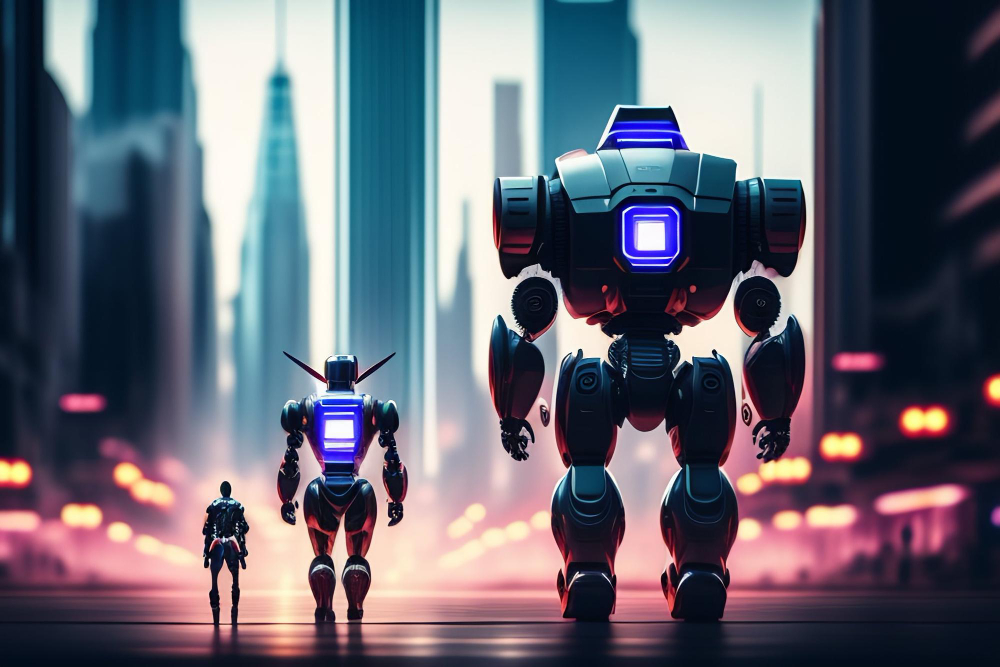
Conclusion
The era of faster, more cost-effective, and visually stunning games is here. Embarking on your game development journey with AI-generated game assets is not just a trend; it’s a strategic move that can redefine the future of your projects. By leveraging the power of AI, developers can overcome traditional constraints, unlock creativity, and deliver gaming experiences that captivate audiences worldwide.
The world is already leaning towards AI-generated game development and the expectation is that it will continue to assist the process in the next few years. So, Start your game development revolution today by incorporating AI-generated game assets into your workflow.

